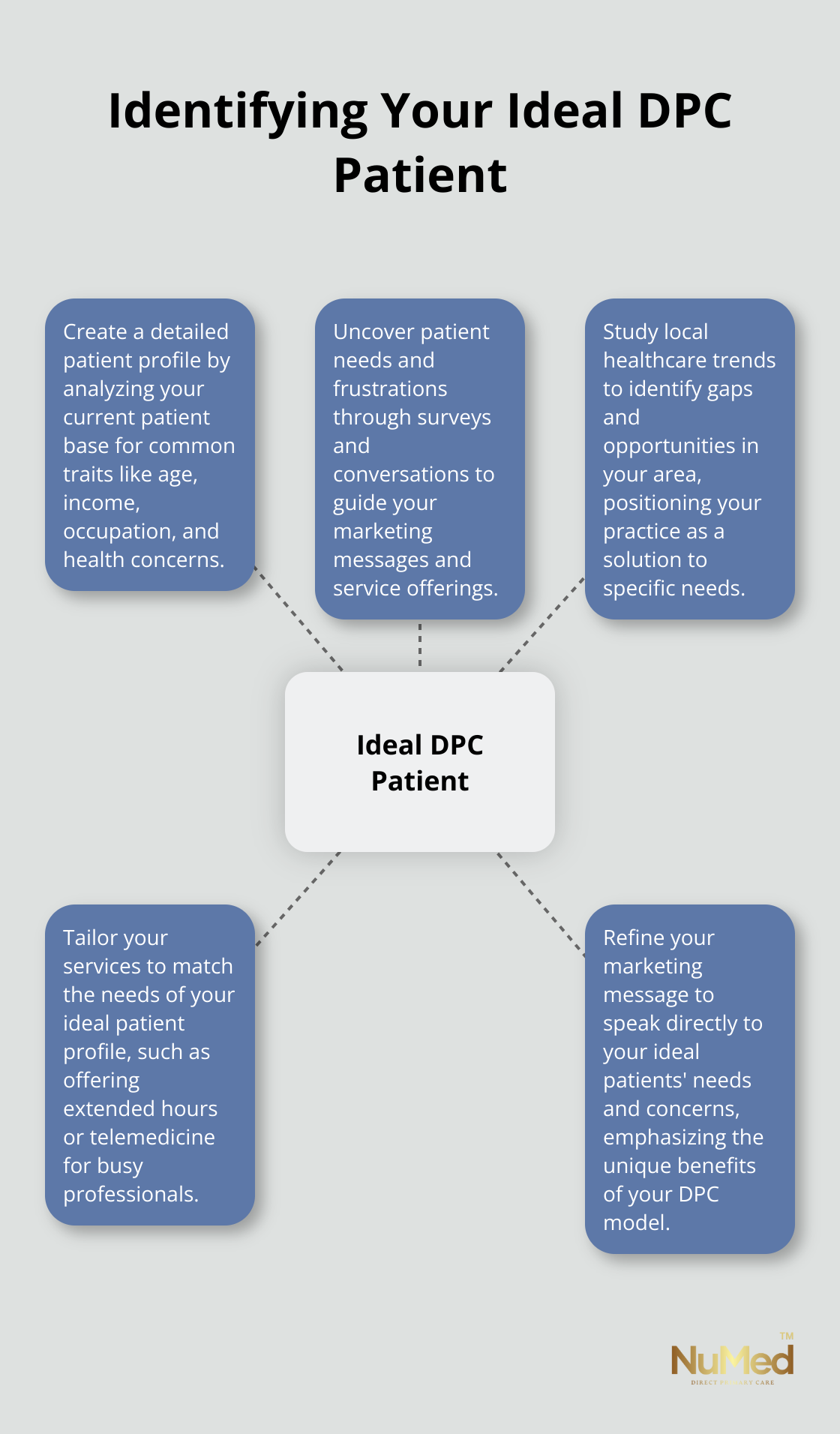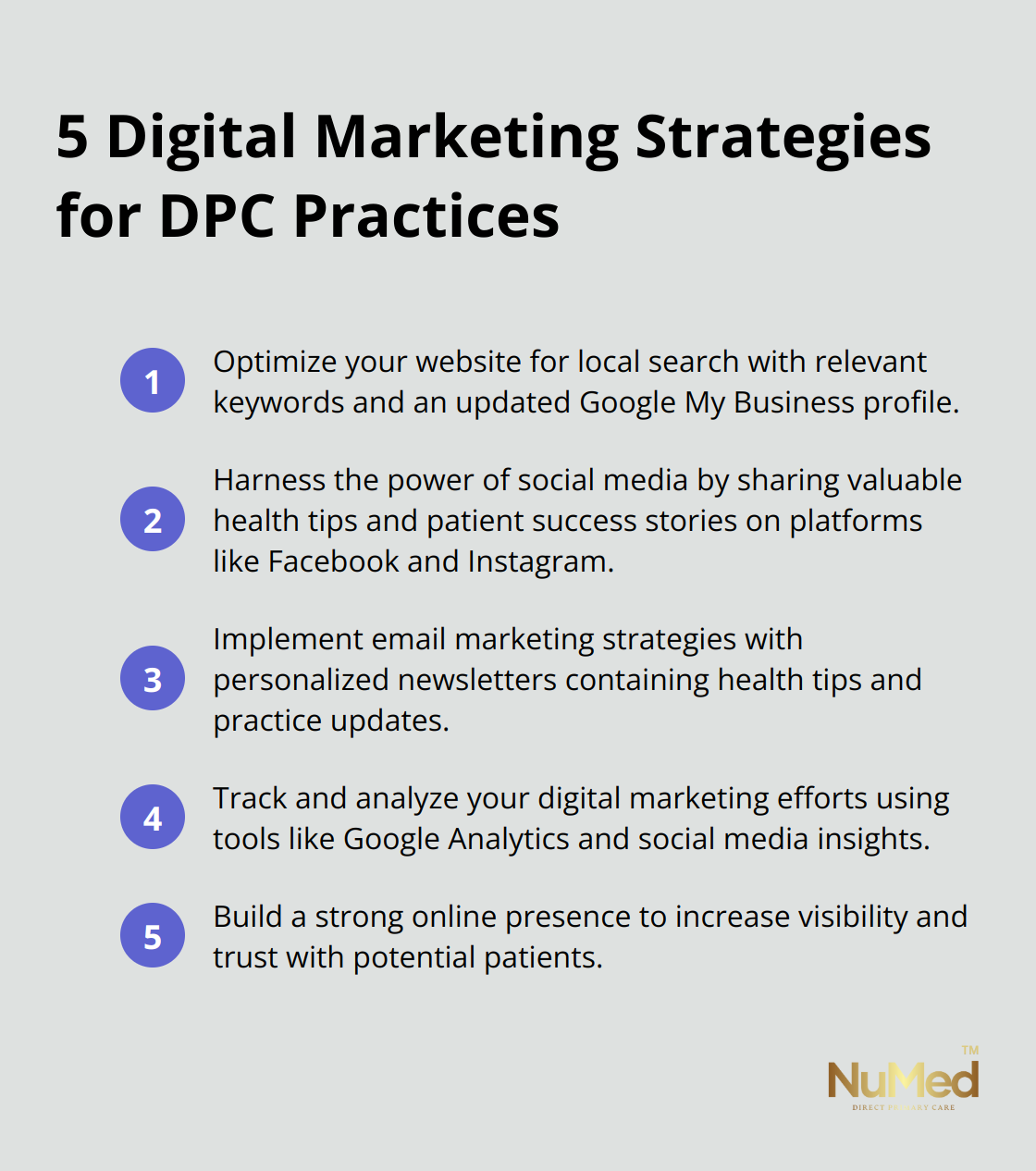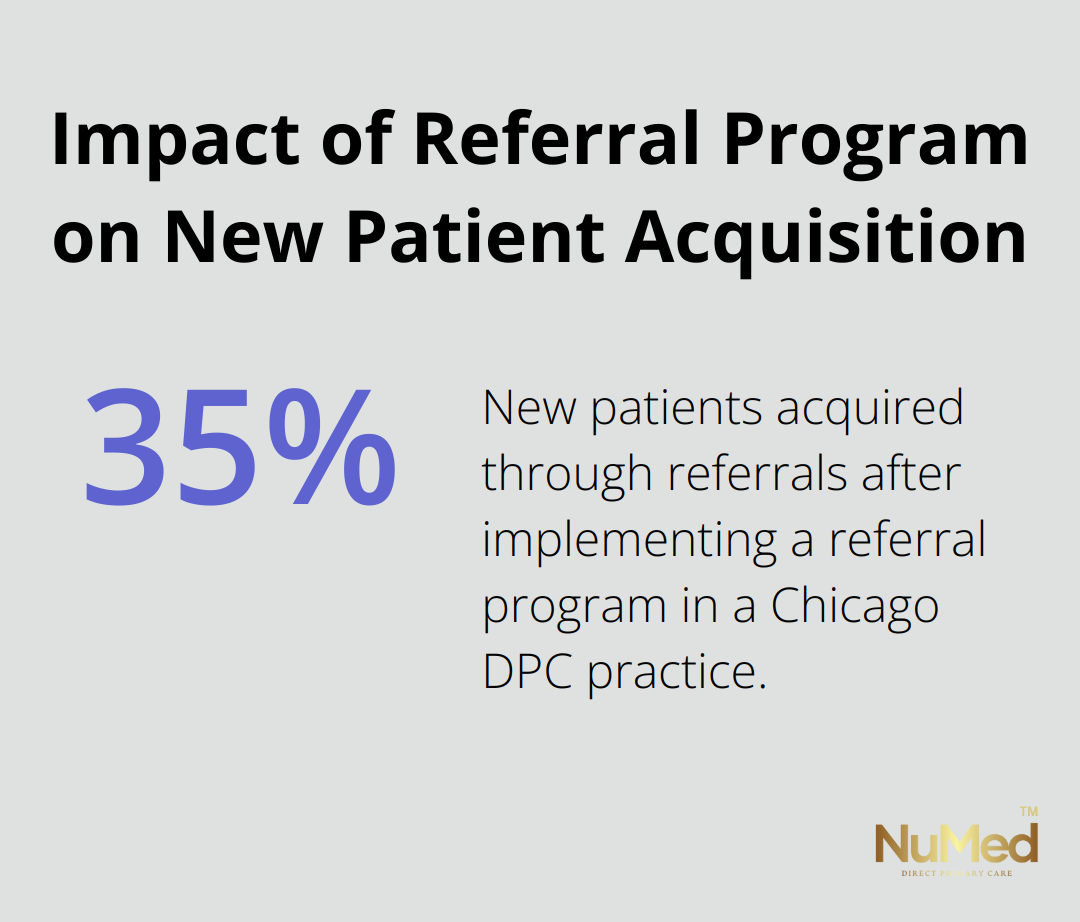At NuMed DPC, we understand the unique challenges of Direct Primary Care marketing. The healthcare landscape is constantly evolving, and DPC practices need effective strategies to stand out.
This blog post will explore proven marketing techniques tailored specifically for DPC practices. We’ll cover everything from understanding your target audience to leveraging digital channels and building strong community relationships.
Who Is Your Ideal DPC Patient?
Create a Detailed Patient Profile
To market your Direct Primary Care (DPC) practice effectively, you must first identify your ideal patient. Start by analyzing your current patient base. Look for common traits such as age range, income level, occupation, and health concerns. This data will help you create a detailed profile of your ideal patient. For example, your practice might attract health-conscious professionals who value preventive care and personalized attention.
Uncover Patient Needs and Frustrations
To understand your patients’ healthcare priorities and pain points, conduct surveys or have informal conversations with your existing patients. Ask what made them choose a DPC model and what aspects of traditional healthcare frustrated them. This information will guide your marketing messages and service offerings. For instance, if many patients express frustration with long wait times, highlight your same-day or next-day appointment availability in your marketing materials.
Study Local Healthcare Trends
Research your local healthcare market to identify gaps and opportunities. Are there underserved populations or health issues that aren’t adequately addressed? Use tools like Google Trends or local health department reports to gather data on prevalent health concerns in your area. This research will help you position your practice as a solution to specific local healthcare needs.
Tailor Your Services
Once you’ve identified your ideal patient profile and understood their needs, tailor your services accordingly. If your target audience consists of busy professionals, consider offering extended office hours or telemedicine options. If you’re targeting families, you might focus on comprehensive family health services (including pediatric care).
Refine Your Marketing Message
Use the insights you’ve gathered to craft a compelling marketing message. Speak directly to your ideal patients’ needs and concerns. For example, if your target audience values personalized care, emphasize how your DPC model allows for longer appointments and more individualized attention.
Understanding your target audience isn’t a static process. You should regularly reassess and update your patient profiles as your practice grows and evolves. This ongoing refinement will ensure your marketing efforts remain relevant and effective in attracting and retaining the right patients for your DPC practice. Now that you’ve identified your ideal patient, let’s explore how to reach them through digital marketing channels.

How Digital Marketing Can Boost Your DPC Practice
In today’s digital age, online channels play a vital role in the success of your Direct Primary Care (DPC) practice. A strong digital presence increases visibility and builds trust with potential patients. Let’s explore effective strategies to maximize your online impact.
Optimize Your Website for Local Search
Optimizing website content with relevant keywords can enhance your practice’s visibility in search engine results. This strategy is crucial for attracting potential patients in your area. Create a Google My Business profile and keep it updated with accurate information about your practice (hours, services, and patient reviews).
Harness the Power of Social Media
Social media platforms offer a unique opportunity to connect with your community and showcase your expertise. Share valuable health tips, patient success stories (with permission), and updates about your practice. Facebook and Instagram prove particularly effective for healthcare practices. Post consistently and try to share content 3-4 times a week. Engage with your followers by responding to comments and messages promptly.
Implement Email Marketing Strategies
Email marketing remains a powerful tool for patient engagement and retention. Build an email list by offering a newsletter sign-up on your website and during patient visits. Send regular newsletters with health tips, practice updates, and educational content. Personalize your emails based on patient demographics or health interests to increase engagement rates. Always comply with HIPAA regulations when handling patient information in your email marketing efforts.

Track and Analyze Your Digital Marketing Efforts
To ensure the effectiveness of your digital marketing strategies, implement tracking and analysis tools. Use Google Analytics to monitor website traffic and user behavior. Social media platforms offer built-in analytics to measure engagement and reach. For email marketing, track open rates, click-through rates, and conversions. These insights will help you refine your marketing approach and allocate resources more effectively.
Digital marketing offers powerful tools to grow your DPC practice. However, online efforts alone may not suffice. The next chapter will explore how to build strong community relationships to complement your digital strategies and create a well-rounded marketing approach.
How to Build Strong Community Ties
Forge Partnerships with Local Businesses
Identify local businesses that align with your healthcare mission. Reach out to gyms, health food stores, or wellness centers. Propose mutually beneficial partnerships. Offer their employees discounted DPC memberships in exchange for promoting your services to their customers. A local gym in Seattle partnered with a DPC practice, resulting in a 30% increase in new patient sign-ups for the practice within six months.
Collaborate with Community Organizations
Connect with local non-profits, schools, and community centers. Offer free health screenings or educational talks at their events. This exposure positions you as a trusted healthcare resource. A DPC practice in Austin, Texas, partnered with a senior center to provide monthly health check-ups, leading to a 25% increase in elderly patients joining their practice.
Host Engaging Health Education Events
Host community health workshops on relevant health topics. These events can be interactive and valuable, providing practical tips on planning and organizing successful health education events. Hosting such workshops can position your practice as a trusted healthcare resource in the community.
Implement a Robust Referral Program
Encourage your satisfied patients to spread the word. Create a referral program that rewards patients for bringing in new members. A simple system (like offering a month’s free membership for every successful referral) can be highly effective. One DPC practice in Chicago reported that 35% of their new patients came through referrals after implementing such a program.

Leverage Patient Testimonials
Real patient stories are powerful marketing tools. With permission, share these testimonials on your website, social media, and in your office. Video testimonials are particularly impactful. A survey by Software Advice found that 71% of patients use online reviews as the first step in finding a new doctor.
Final Thoughts
Marketing a Direct Primary Care (DPC) practice requires a multifaceted approach that combines digital strategies with strong community engagement. These strategies form the foundation of successful Direct Primary Care marketing. Your marketing messages should reflect your practice’s values and the unique benefits of the DPC model.
Marketing is an ongoing process. You must continuously evaluate the effectiveness of your strategies and adapt based on results and changing patient needs. Track key metrics like website traffic, social media engagement, and new patient sign-ups to measure the impact of your marketing efforts.
At NuMed Direct Primary Care, we focus on personalized care, preventive medicine, and comprehensive services. We communicate our unique value proposition and build strong community ties. As you implement these marketing strategies, stay true to your mission of providing exceptional, patient-centered care.
















